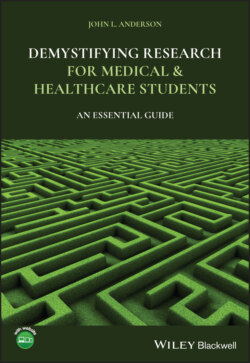Читать книгу Demystifying Research for Medical and Healthcare Students - John L. Anderson - Страница 52
CHAPTER 4 Experimental Quantitative Approaches: Non‐randomised Clinical Trials Introduction
ОглавлениеClinical trials of new forms of tests or treatment begin with Phase I trials then Phase II Trials. (Phase III trials or Randomised Control Trials (RCTs) are covered in the next chapter.)
These early trials to test new forms of assessing or treating patients are:
Still in the quantitative domain – we measure and quantify what we are observing.
They are usually hypothetico‐deductive – we test a hypothesis.
They are interventional – the new forms of testing or treating patients form our interventions.
And they are prospective – we recruit a group of participants, and we give them our new test or treatment and we measure the outcomes.
The difference between these and the experimental approaches we have discussed so far, is that these do not include a control group.
Before we test new medicines on people, we usually test them in the laboratory first. The ABPI Handbook states this:
… before an IMP can be given to humans, sponsors must first test it thoroughly in animals. The main aims of these pre‐clinical studies are:
to find out the effects of the IMP on body systems (pharmacodynamics)
to study the blood levels of the IMP, and how it is absorbed, distributed, metabolised and eliminated after dosing (pharmacokinetics)
to find out if a range of doses of the IMP, up to many times higher than those intended for use in humans, are toxic to animals and if so, to identify the target organs and the margin of safety in terms of (a) the no‐observed‐adverse‐effect dose level ( NOAEL ) relative to body weight and (b) IMP exposure − the concentration of IMP in the bloodstream over 24 hours (toxicokinetics), and
to make a formulation of the IMP, such as a capsule or injection, suitable for early studies in humans.
After the pre‐clinical studies, there are four phases of trials in humans, which in practice often overlap. Phases 1 to 3 are done before a licence is granted and Phase 4 is done after authorisation to market the drug. The phases are different in terms of the number and types of subject studied, and the questions asked. The numbers in the table are indicative only and can vary.
(ABPI 2014)
